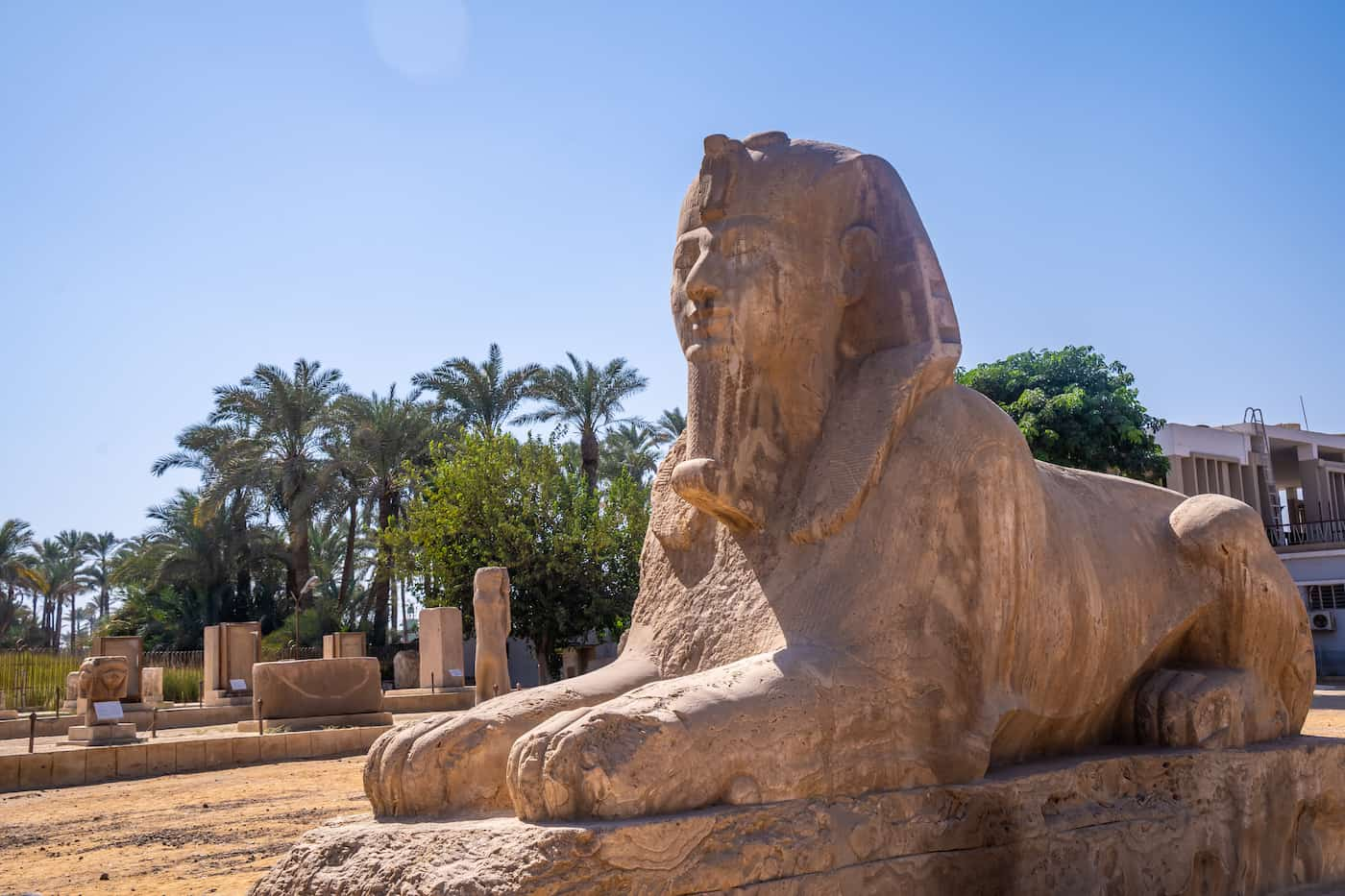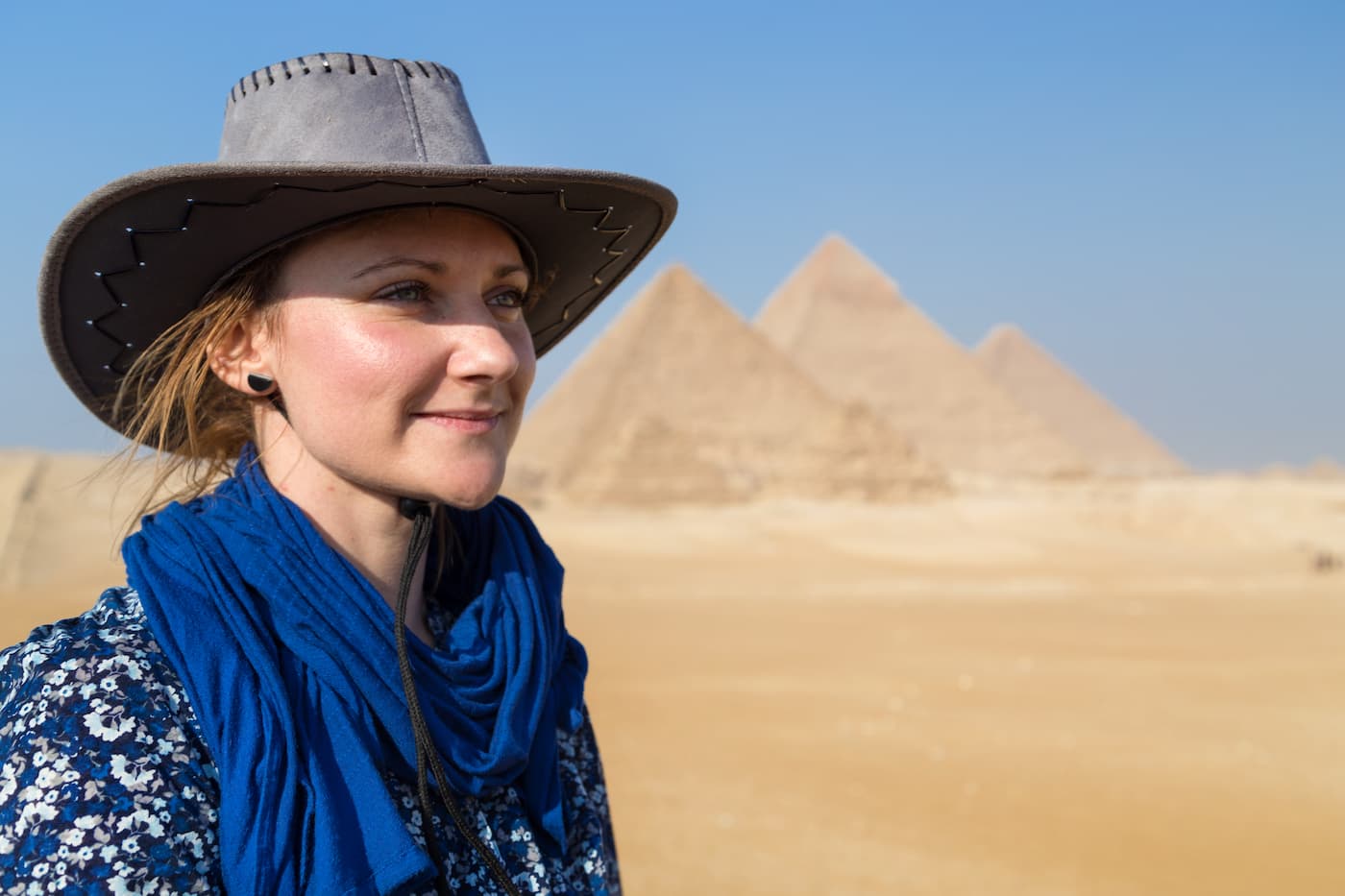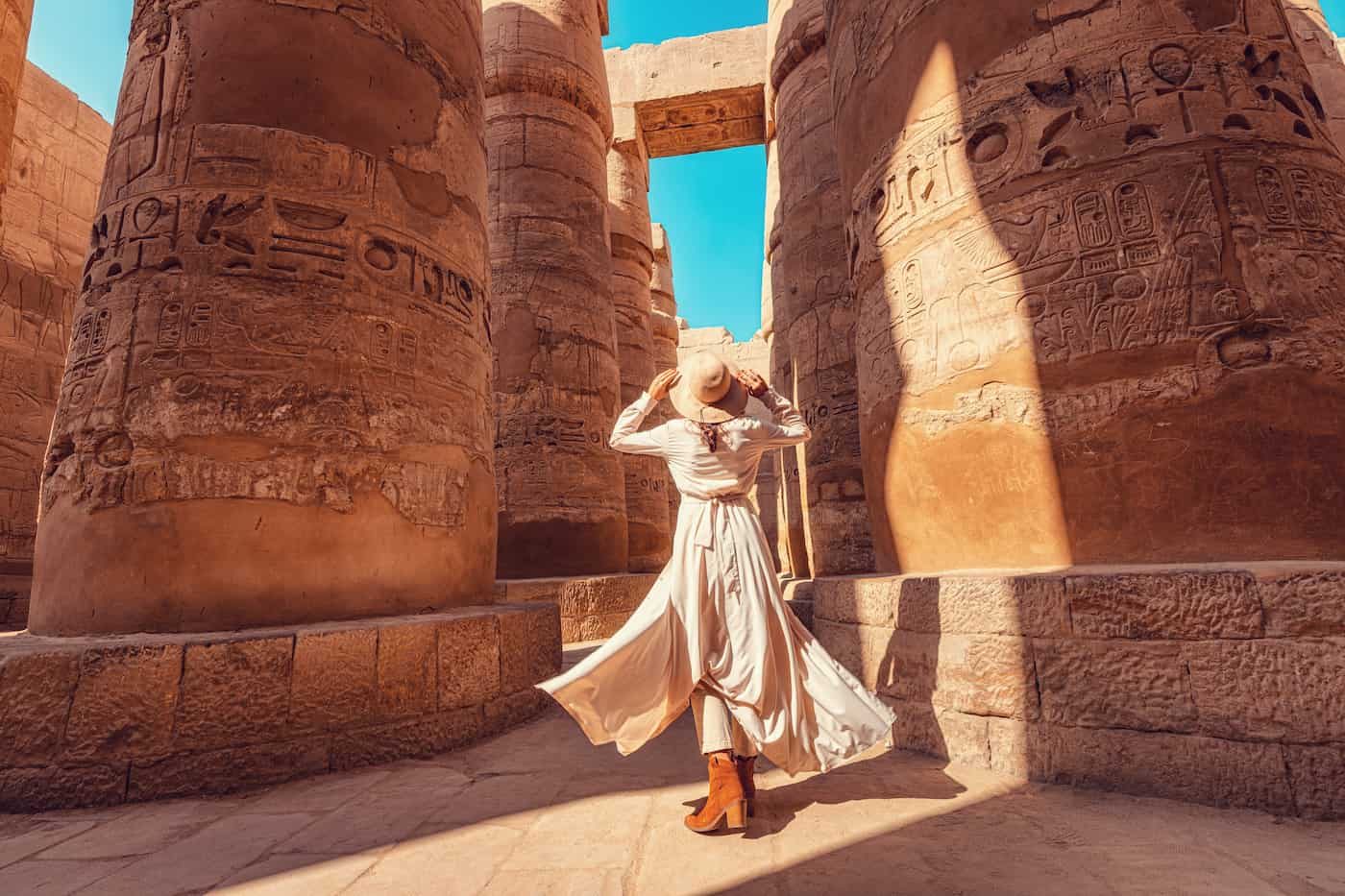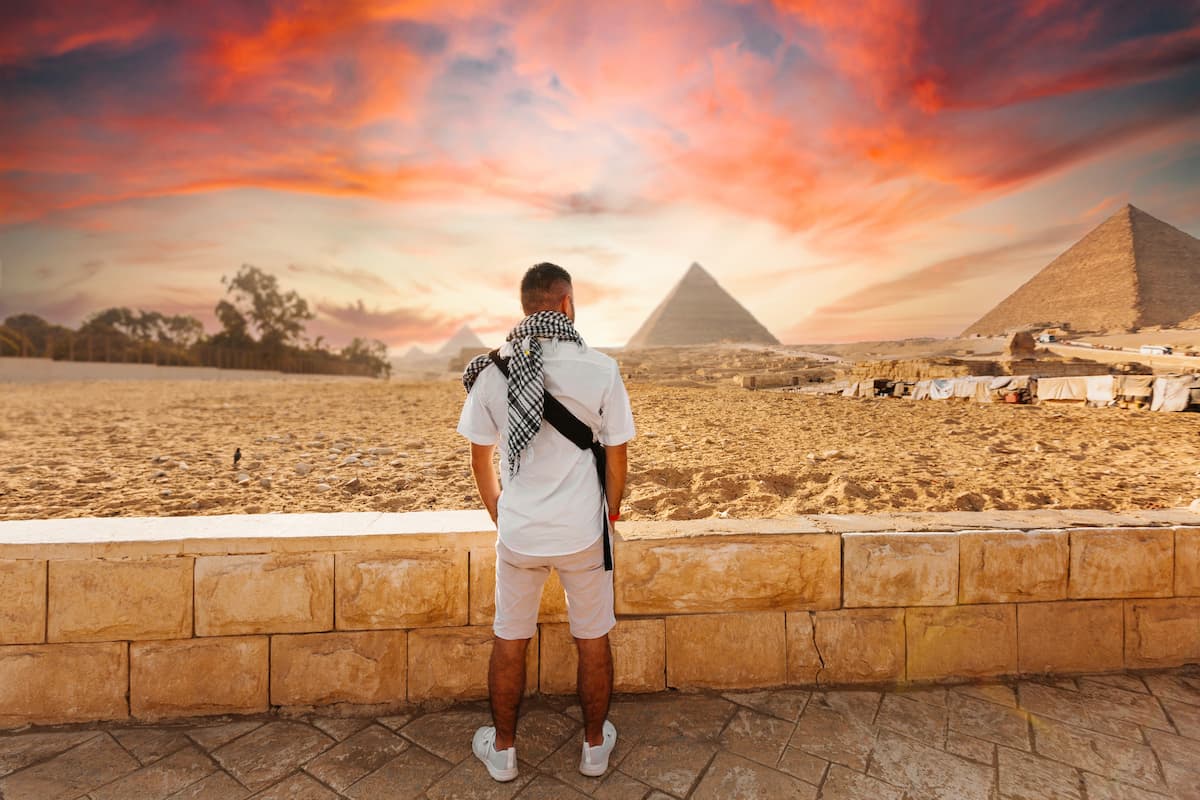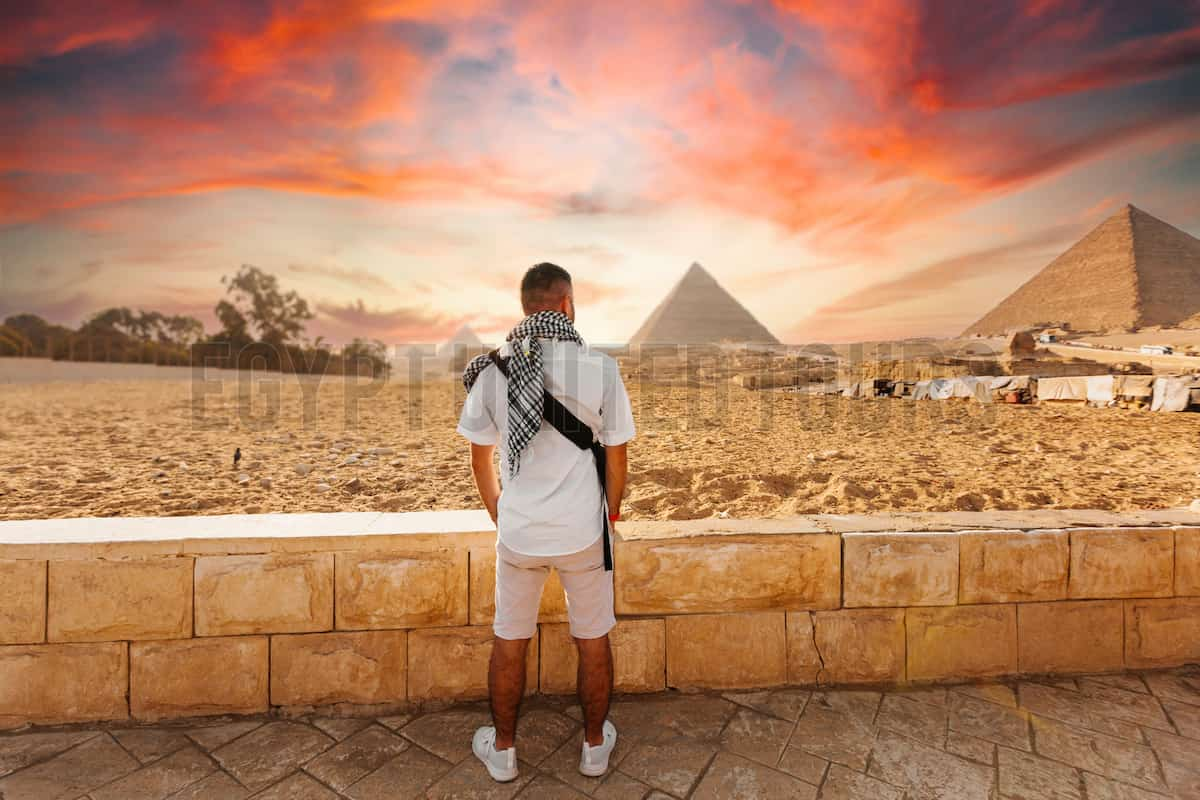Ancient Memphis: The Capital of Ancient Egyptian Civilization and The City of the Pharaohs
The king Menes built ancient Memphis around 3100 BC. It was the heart of the ancient Egyptian empire during the Pharaonic period. Memphis has a strategic position at the Nile Delta. As it existed on the west bank of the Nile River. It had a major role in the development of ancient political, cultural, and religious aspects in Egypt.

Ancient Memphis
It was the capital of ancient Egypt (Kemet or Kumat) during the Early Dynastic Period and Old Kingdom. Memphis remained an important city throughout ancient Egyptian history. Its principal port (Peru-nefer) had many workshops, factories, and warehouses that distributed food and goods throughout the ancient kingdom. Memphis was a regional centre for commerce, trade, and religion during its golden age.
Memphis was the seat of many pharaohs who ruled Egypt, such as the First Dynasty. It was the capital of a unified Egypt, and had famous landmarks as the Great Sphinx and the Pyramid of Khufu, as well as many temples.
Names of Ancient Memphis:
- Memphis has had several names during its history that span four thousand years. Its Ancient Egyptian name was (Inebu-hedj ), which meant “the white walls.”.
- The city also had various other names because of its size. These names were of famous neighbourhoods or districts. For example, it had a name as (Djed-Sut, meaning everlasting places which is the name of the pyramid of Teti.
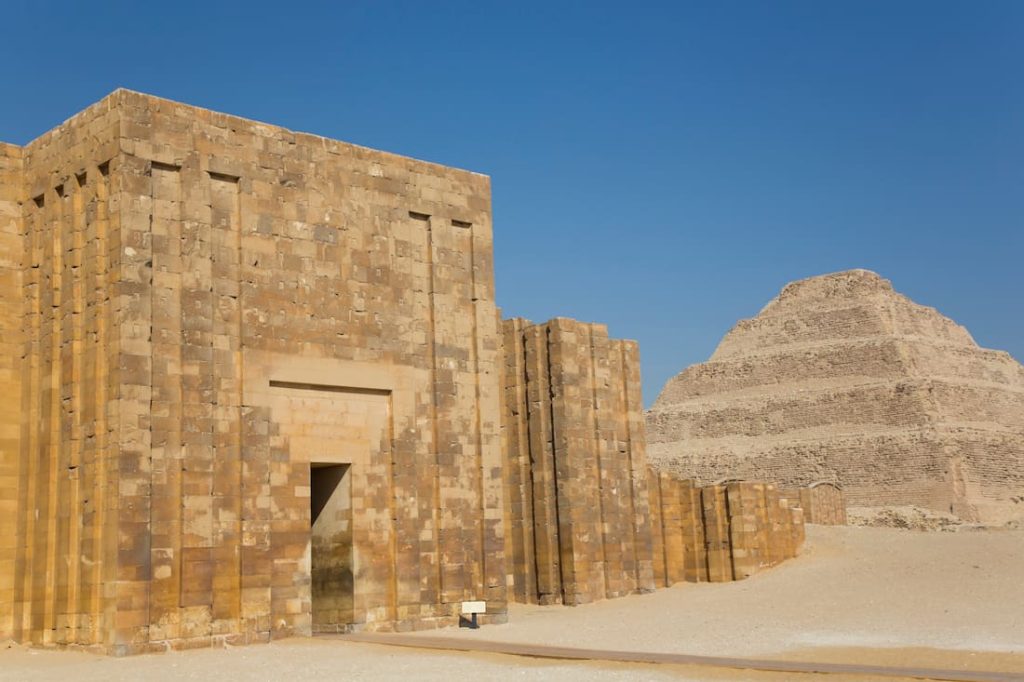
city of the Ancient Memphis
- The city also had a name (Ankh-Tawy, which meant “Life of the Two Lands”) because of the strategic position of the city. This name refers to the Middle Kingdom (c. 2055–1640 BCE). Many found this name in ancient Egyptian texts. Some scholars said that this name was of an area that contained a sacred tree, between the great Temple of Ptah and the necropolis at Saqqara.
- At the beginning of the New Kingdom. The city had another name, as Men-nefer, which meant “enduring and beautiful”, and became “Memfi” in Bohairic Coptic.
- The name “Memphis” is the Greek adaptation of the name. This name was of the pyramid of Pepi, which existed west of the city.
- Some said that the modern town of Mit Rahina received its name from the ancient Egyptian name for Memphis, which meant “Road of the Ram-Headed Sphinxes”. It had a reference to the ancient way between Memphis and Saqqara.
- The Greek poet explained the name. He said that Memphis was a daughter of the Greek river god Nilus and the wife of Epaphus (the son of Zeus and Io), who founded the city and named it after his wife.
- Memphis is called either ‘’Noph’’, or Moph in the Bible.
Ancient Memphis Map
The city of Memphis is 20 km (12 miles) south of Cairo, on the west bank of the Nile. The modern cities and towns of Mit Rahina, Dahshur, Abusir, Abu Gorab, and Zawyet el’Aryan, south of Cairo, are all within the administrative borders of historical Memphis. The city was also the boundary between Upper Egypt and Lower Egypt.

Ancient Memphis Map
Ancient Memphis Population
Memphis is an uninhabited city these days. The closest modern settlement is the town of Mit Rahina. Estimates of historical population size differ widely among sources. Memphis had some 30,000 inhabitants according to Tertius Chandler. It was the largest settlement worldwide since its foundation until approximately 2250 BC and from 1557 to 1400 BC. The city’s population was approximately 6,000 inhabitants during the Old Kingdom.
Ancient Egyptian History
Ancient Egyptian map
Memphis became the capital of Ancient Egypt for more than six consecutive dynasties during the Early Dynastic Period and Old Kingdom. The city developed more than any period during the Sixth Dynasty as a centre for the worship of Ptah, the god of creation and artworks. As the Temple of Ptah is a memorial because of the city’s former power and prestige

The city of Ancient Memphis
Memphis declined after the Eighteenth Dynasty with the rise of Thebes and the New Kingdom. In contrast, it was revived under the Persians, before falling into second place after the founding of Alexandria
Memphis declined after the Eighteenth Dynasty with the rise of Thebes and the New Kingdom. Then, Alexandria was the most important Egyptian city, but Memphis was the second city of Egypt under the Roman Empire until the establishment of Fustat in 641 AD. Afterward, it fell and became a source of stone for the settlements.
The architecture of this period was similar to that seen at Giza Royal of the Fourth Dynasty. The essential focus of the kingdom at that time centred on the construction of the royal tombs.
Memphis in the New Kingdom
Memphis became a centre for the education of royal princes and the sons of the nobility. In the New Kingdom, Amenhotep II, born and raised in Memphis. His son, Thutmose IV, received his famous and recorded dream whilst residing in Memphis. King Amenhotep III -built a temple called “Nebmaatra united with Ptah” in Memphis. Many sources mentioned it from the period of his reign.

King Amenhotep III
There is evidence that the city developed new importance in the political sphere through its proximity to the new capital Pi-Ramesses, under the reign of Ramesses II. The king devoted many monuments in Memphis and decorated them with colossal symbols of glory. Merneptah (r. 1213–1203 BC), his successor, constructed a palace and developed the southeast wall of the temple of Ptah. Memphis received the privileges of royal attention for the early part of the 19th Dynasty.
Memphis in the Late Period
The city under the Late Period saw recurring invasions followed by successive liberations. Several times besieged, it was the scene of several of the bloodiest battles in the history of the country. Despite the support of their Greek, the country nevertheless fell into the hands of the conquerors, and Memphis was never again to become the nation’s capital. In 332 BC came the Greeks took control of the country from the Persians, and Egypt would never see a new native ruler ascend the throne until the Egyptian Revolution of 1952.

Potlemic period
On the death of Alexander in Babylon (323 BCE), Ptolemy worked hard to have his body and bringing it to Memphis. Ptolemy said that the king wanted to be buried in Egypt. So, he carried the body of Alexander to the temple of Ptah, and the priests embalmed him. The city’s gradual decline during the Ptolemaic dynasty. It was Ptolemy I who first introduced the cult of Serapis in Egypt.
The Ancient Memphis Decline:
Memphis lost its place permanently in favour of Alexandria, which opened onto the empire with the arrival of the Romans. The rise of the cult of Serapis and the emergence of Christianity taking root deep into the country led to the decline of the ancient cults of Memphis.
The city gradually deteriorated and finally disappeared during the Byzantine and Coptic periods. It then became a quarry from which its stones were used to build new settlements nearby, like Fustat, the new capital founded by the Arabs who took possession in the seventh century AD. The foundations of Fustat and later Cairo were with stones of dismantled temples and ancient necropoleis of Memphis. The Arab chronicler Abd-ul-Latif visited the site of the city. Then he described the beauty of the ruins of Memphis in the thirteenth century.
Although the remains today are nothing compared to what the Arab historian witnessed, his testimony has inspired the work of many archaeologists. The first surveys and excavations of the nineteenth century showed a little of the former glory of the ancient capital. Memphis and its necropolis, which include funerary rock tombs, mastabas, temples, and pyramids, were the World Heritage List of UNESCO in 1979.
Ancient Memphis Monuments and Development
Memphis developed in power and size during the time of the New Kingdom, especially under the reign of the rulers of the Nineteenth Dynasty. It rivalled Thebes both politically and architecturally. Archaeologists have gradually been able to confirm the layout and expansion of the ancient city after more than a century of excavations on the site. Thus, Memphis had many monuments, temples, and statues.
Here are some of the achievements of Memphis:
1- Great Temple of Ptah
The Hout-ka-Ptah was for the worship of the creator god Ptah. It was the largest and most important temple in ancient Memphis. It was one of the most prominent structures in the city. The temple was one of the three foremost places of worship in Ancient Egypt, the others being the great temples of Ra in Heliopolis and of Amun in Thebes.
The remains of the great temple and its premises are displayed as an open-air museum near the great colossus of Ramesses II and a large sphinx monolith. It is the finest example of this kind of statuary still present on its original site. The outdoor museum had many other statues, colossi, sphinxes, and architectural elements. You can find most of its statues in the Egyptian Museum in Cairo.
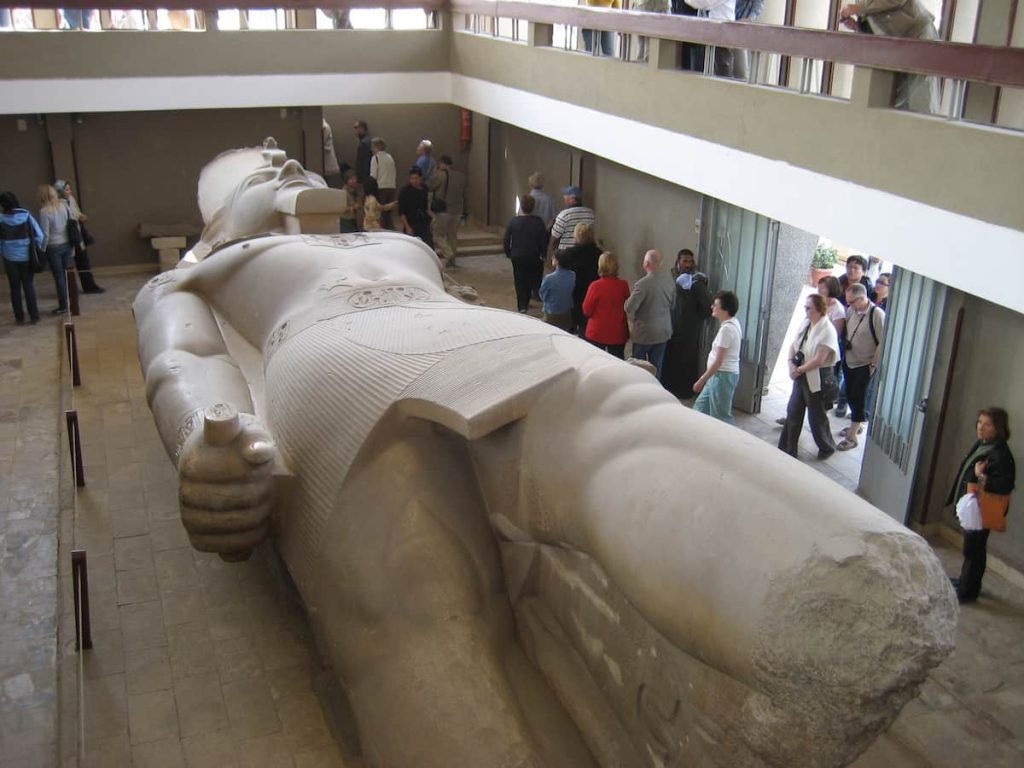
Pi-Ramesses The Imperial Palace of Ramses II
Recent developments include the discovery of giant statues that decorated the gates or towers.
2- Ptah of Ramesses II Temple
This small temple was for the deified Ramesses II, along with the three state deities: Horus, Ptah, and Amun. It was the Temple of Ptah of Ramesses, Beloved of Amun, God, Ruler of Heliopolis.
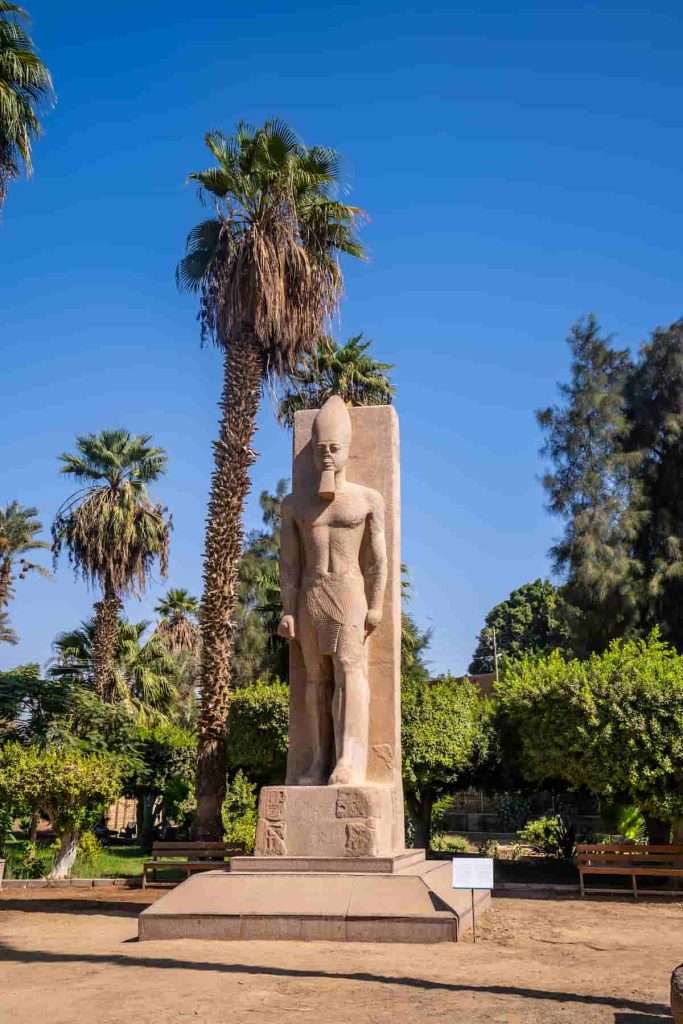
Ptah of Ramesses II Temple
Archaeologist Ahmed Badawy discovered its ruins in 1942. The excavations uncovered a religious building complete with a tower, a courtyard for ritual offerings, a portico with columns, followed by a pillared hall and a tripartite sanctuary, all enclosed in walls built of mudbricks. Its most recent exterior has been dated from the New Kingdom era.
3- Temple of Ptah and Sekhmet of Ramesses II
This temple was farther east, and near to the great colossus of Ramesses. This small temple was for the nineteenth dynasty, and dedicated to Ptah and his divine consort Sekhmet, as well as deified Ramesses II. Its ruins are not so well preserved as others nearby, as its limestone foundations appear to have been quarried after the abandonment of the city in late antiquity.

They were two giant statues from the Middle Kingdom. Egyptians decorated the building’s facade, which opened to the west. They were moved inside the Museum of Memphis, and depicted the king standing in the attitude of the march, wearing the Hedjet, the white crown of Upper Egypt.
4- Temple of Ptah of Merneptah
The king Merneptah of the Nineteenth Dynasty founded a new shrine in honour of the chief deity of the city, Ptah. Flinders Petrie discovered this temple in the early twentieth century.
The temple remained in use throughout the rest of the New Kingdom. However, it became gradually abandoned, and civilians used it for other purposes. It gradually disappeared with the activity of the city. The stratigraphic study of the site shows that by the Late Period, it was already in ruins and was soon covered by new buildings.
5- Temple of Hathor
Abdullah al-Sayed Mahmud discovered this small temple of Hathor in the 1970s. It was also during the time of Ramesses II. This temple was for the goddess Hathor, Lady of the Sycamore. It presents an architecture similar to the small temple-shrines, especially to Karnak. Egyptians used them for processional purposes during religious festivals.
6- Temple of Apis
The Temple of Apis in Memphis was the main temple dedicated to the worship of the bull Apis. The temple consisted of two chambers, one for the bull and the other for his mother, and all was built near the temple of Ptah. This bull would walk through the streets of the city on certain holidays, adorned with jewellery and flowers.
7- Temple of Amun
Siamun built a shrine of the great god Amun to the south of the temple of Ptah during the Twenty-first Dynasty. This temple was for the Theban Triad. It consisted of Amun, his consort Mut, and their son Khonsu. It was the Upper Egyptian counterpart of the Memphis Triad (Ptah, Sekhmet, and Nefertem).
8- Statues of Ramesses II
The ruins of ancient Memphis have contained a large number of sculptures representing Ramesses II. There is a giant statue of him carved of monumental limestone in the Memphis museum. It was about 10 metres in length. Italian archaeologist Giovanni Caviglia discovered it in 1820 near the southern gate of the temple of Ptah. It is currently displayed lying on its back because its base and feet are broken off from the rest of the body. The king wears the white crown of Upper Egypt, Hedjet.
9- Memphite Necropolis
Memphis had several necropoleis along the valley, including the most famous, Saqqara, because of its antiquity and its large population. In addition, the urban area consisted of cemeteries that were to the west of the great temple. The sanctity of these places inevitably attracted the devout and the faithful, who sought either to make an offering to Osiris or to bury another.
The part of the city called Ankh-tawy was already included in the Middle Kingdom necropolis. The kings of the Twenty-Second Dynasty ordered expansions of the western sector of the temple of Ptah. All that was to revive the past glory of the Ramesside age. Within this part of the site was founded a necropolis of the high priests.
The site also included a chapel or an oratory to the goddess Bastet, which seems consistent with the presence of monuments of rulers of the dynasty following the cult of Bubastis. Also in this area, there were the mortuary temples of various New Kingdom kings.
10- Mit Rahina Open Air Museum
There are the colossal statue of Ramses II and another large statue of him in the Mit Rahina Open Air Museum, among the most important artifacts. There is also an alabaster statue of the Sphinx and several other artifacts that exist in an open-air museum in the Mit Rahina area. The sphinx is one of the most important archaeological landmarks in the city.
Royal Palaces in Memphis
Memphis was the seat for the kings of more than eight dynasties. Hor-Aha, the successor of Narmer, the founder of the 1st Dynasty, founded the first royal palace. He built a fortress in Memphis of white walls. There were also the palaces of the Old Kingdom rulers, some of which were underneath major royal pyramids. They were huge with parks and lakes.
Merneptah ordered building of a large walled enclosure that had a new temple and an adjoining palace. Then, Apries ordered the building of a group of palaces such as the royal palace, a fortress, barracks, and armouries. Flinders Petrie excavated the area and found considerable signs of military activity.
Conclusion
Ancient Memphis was the capital for much of its history. It played an important role in the nation’s political, religious, and cultural development. It became dominant during the Old Kingdom. Its strategic location at the Nile’s delta influenced trade and defense.
The city has lost many of its elements, but it continues because of its legacy as a vital ancient Egyptian capital.It had many historical and archaeologically significant remains, such as The Mit Rahina Museum artifacts like the alabaster Sphinx and the Colossus of Ramses II, which express the city’s past and importance.

